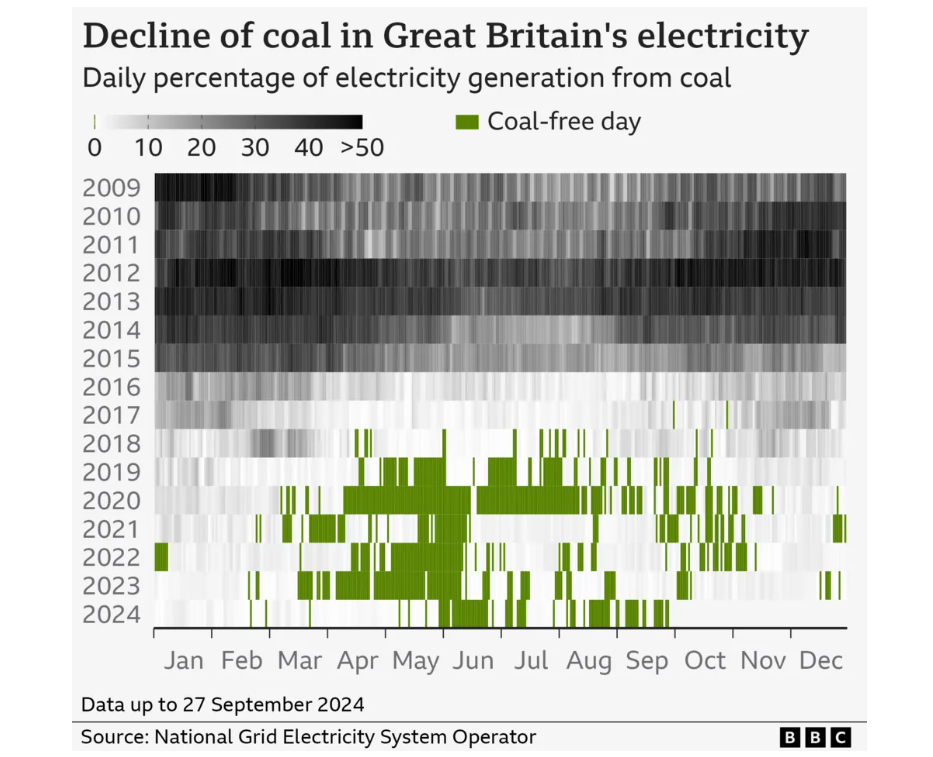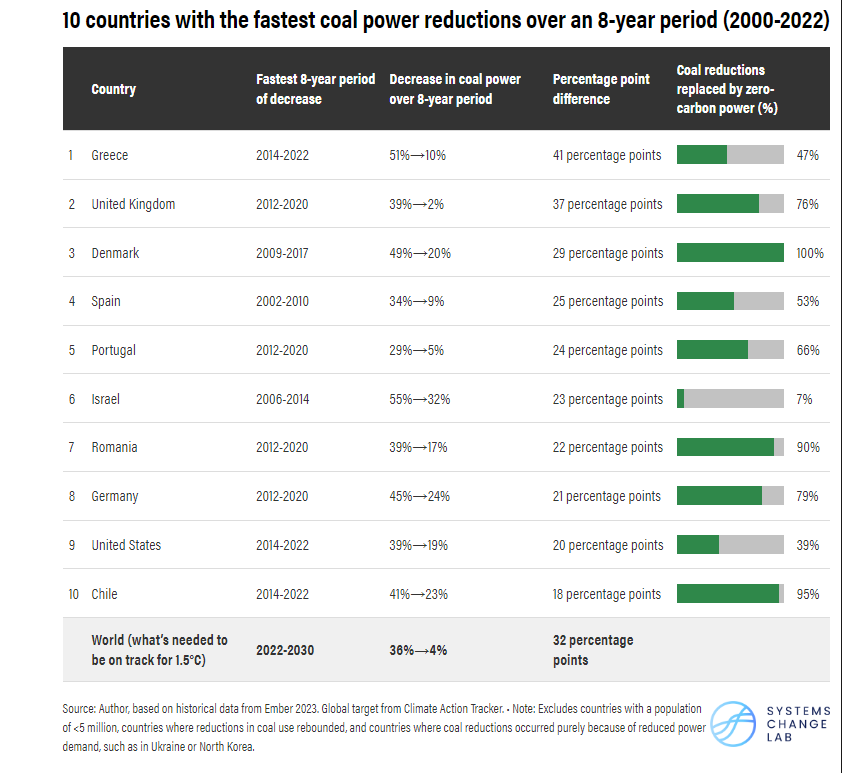News shows that Britain is closing its last coal power station at Ratcliffe-on-Soar, marking the end of an era in which coal-generated electricity in the nation spurred the Industrial Revolution. According to the BBC, the country is the birthplace of coal power and will be the first major economy to give it up.
While Britain was the first country in the group of seven major economies to phase out coal, other European countries, like Sweden and Belgium, have done so earlier.
The coal power plant closed its operation at midnight on 30 September 2024 after running since 1967. The announcement was a sad day for workers, but many of the 170 remaining employees will stay during the two-year decommissioning process.
The UK government also hailed that closure ushers to a new milestone in the efforts to generate electricity from renewable sources by 2030.
Britain’s history of coal-generated electricity
In 1882, the world witnessed the birth of the first coal-fired plant in London, known as Thomas Edison’s Edison Electric Light Station. This marked the beginning of an era when coal served as the primary source of electricity for the UK, fueling homes and businesses until the mid-20th century.
Fast-forward to 1968, and Ratcliffe-on-Soar emerged, featuring eight striking concrete cooling towers and a towering 650-foot chimney. It quickly became a recognisable landmark for millions travelling along the M1 highways or by train.
In the 1990s, gas overtook coal as the primary source, but coal remained a vital part of the UK grid for two decades. In 2012, coal still generated 39% of electricity.
As climate change science grew and calls to reduce GHG emissions increased, coal, the dirtiest fossil fuel, became the primary target. After the country established its climate targets in 2008, what followed was the announcement in 2015 to part with coal within the next ten years, a decision that would finally seal coal’s fate in the country.
This clear government policy direction allowed renewable generation to grow from just 7% in 2010 to more than half in 2024, setting a record for the country. In 2017, the UK tasted its first coal-free days.
The BBC graph below shows the decline in the amount of coal used to produce energy.

Significance of Ratcliffe-on-Soar shutdown
The phasing out of Britain’s last coal power plant is significant as it demonstrates how energy transitions can rapidly occur. It also sets an example for many developed and developing economies to follow in the bid to slash planet-warming gases. The challenge for governments transitioning from coal to renewables is to consider the impacted workers and ensure that there are green jobs for them to go to.
Climate research has been advocating the phasing out of fossil fuels as an essential step to stop climate change, and coal is one of the most polluting of them all. According to high emissions from Climate Action Tracker, global coal use to generate electricity must drop to 4% by 2030 and to zero by 2024 if the world is to meet the 1.5°C Paris Agreement temperature limit.
WRI list down countries that have phased out coal the fastest and those with high coal users
Several countries, mainly in Europe, have made impressive progress in reducing their coal dependence. Greece and the UK achieved the fastest coal power reductions, faster than required globally, followed by Denmark, Spain, Portugal, Israel, Romania, Germany, the United States, and Chile.
For instance, the UK’s coal use has steeply declined from 36% to less than 4% in just six years. The United States slashed its coal use in half between 2014 and 2022, replacing it with a combination of gas, solar and wind.
Chile’s coal plants have been booming recently. Between 2009 and 2019, 14 additional coal plants were built to satisfy growing demand. However, Chile’s solar and wind energy generation began to outpace demand, allowing it to close its coal plants. Coal fell from 46% of its electricity mix in 2013 to 23% in 2022.
The WRI graph below shows the world’s ten fastest coal-eliminating countries.

The WRI article notes the similarities and differences between these ten countries. Eight of them, except Romania and Chile, are considered high-income countries. Seven have relatively small populations, except for three countries—the USA, the UK, and Germany. Nevertheless, regardless of their population size and economic standing, these countries have proven that rapid transition is feasible.
Contrast them to highly coal-dependent countries such as China (61% coal power share), Indonesia (62%), India (74%), and South Africa (85%). According to the WRI, these countries will face steeper challenges in meeting the global climate targets.
The sheer amount of their coal capacity, particularly China’s 1,100 GW and India’s 240 GW, plus their sizeable domestic coal mining industries, on which millions of coal miners and workers depend, will make the transition from coal very difficult.
Sources:
Poynting, M. & Stallard, E. (2024, 30 September). BBC. Retrieved from https://www.bbc.com/news/articles/c5y35qz73n8o
UK becomes the first major economy to stop burning coal for electricity, closing its last power plant. (2024, 30 September). CNN. Retrieved from https://edition.cnn.com/2024/09/30/climate/uk-coal-plant-end-fossil-fuels/index.html
Jaeger, J. (2023, November 30). World Resource Institute. Retrieved from https://www.wri.org/insights/countries-phasing-out-coal-power-fastest?



Leave a Reply